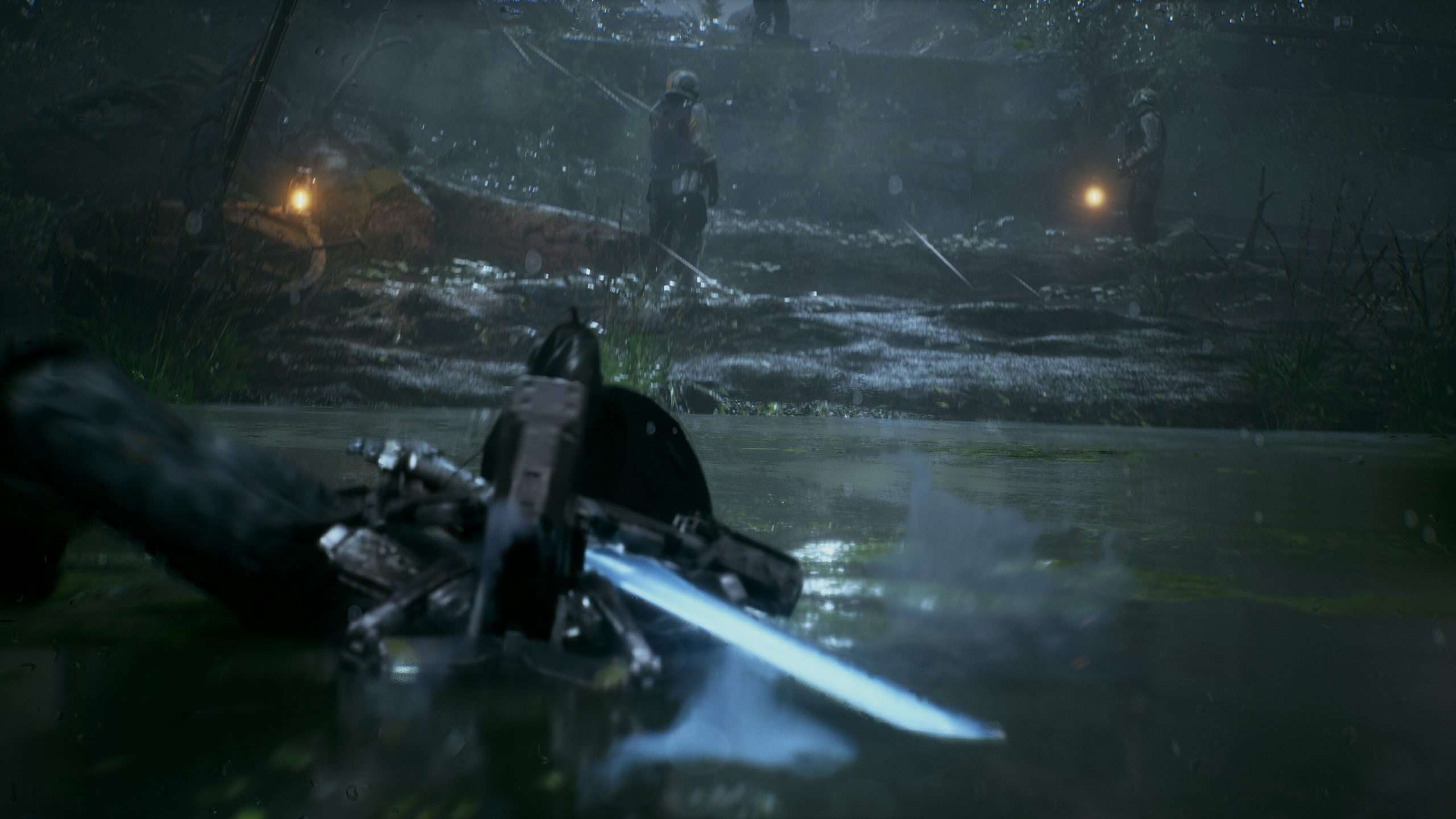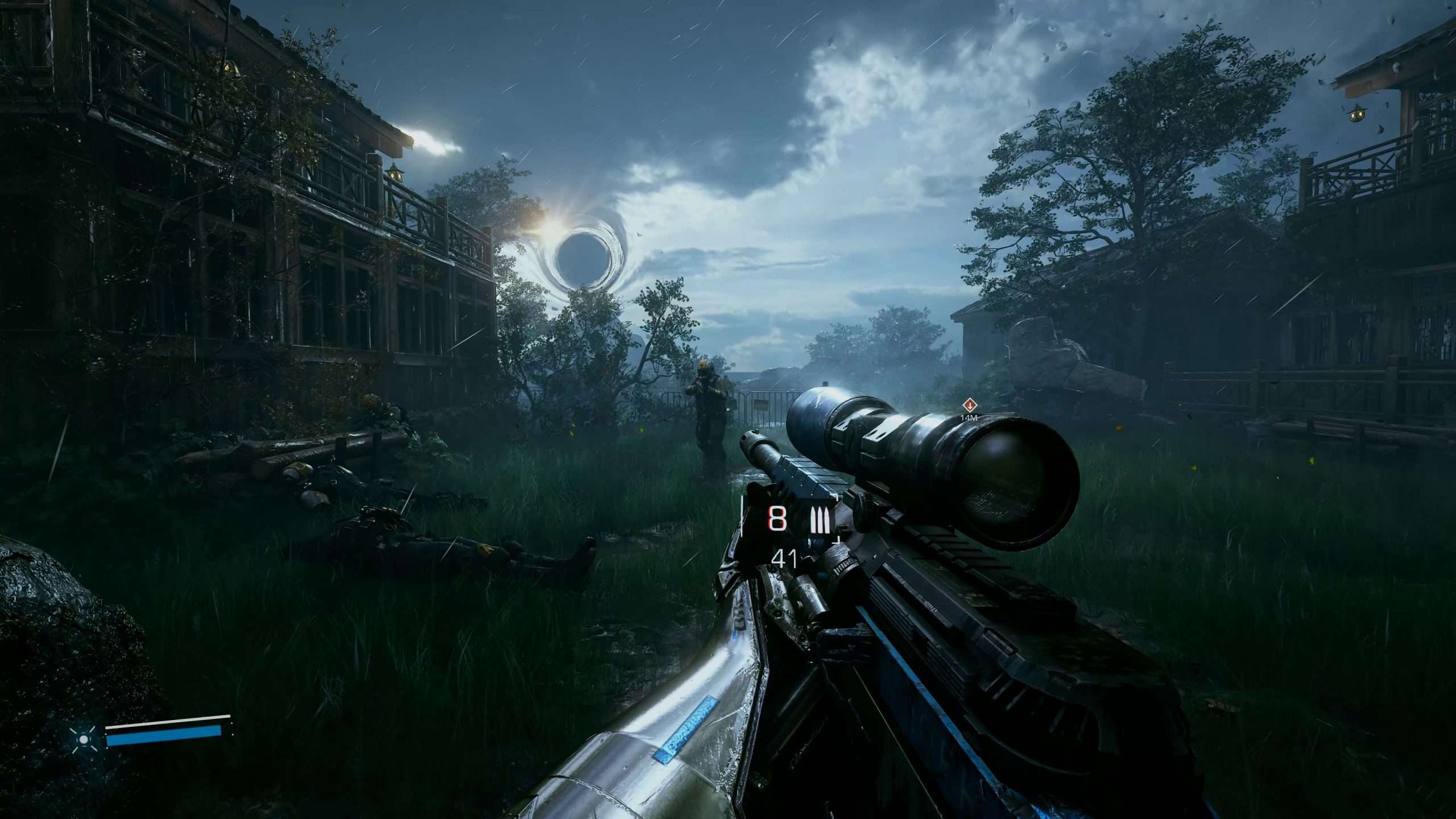
Bright Memory: Infinite PC Review
Bright Memory: Infinite started life known as Bright Memory and was solo developed by Zeng Xiancheng using Unreal Engine 4 during his spare time. It was released on Steam as an Early Access title and gained a small following, thanks to its impressive visuals. Bright Memory uses new technologies, like real-time ray tracing and Nvidia’s deep learning super sampling (DLSS) mixed with some rather competent high octane, first-person action, eventually leaving Early Access a year later as a short 30-minute game. There was some controversy around the title, as Zeng had used some unregistered copyright material, and so had to readjust these in Bright Memory with the help of a friend to enable it to remain on sale. With funds from Bright Memory, Zeng decided to go full time and redevelop the game to what we know as Bright Memory: Infinite, with a promise of a larger game and more madness than the tantalising demo supplied. The biggest question for me is then does it uphold the potential seen in the original release? Especially after gaining a big push in the Xbox Series X/S showcase back when the console launched last year as a demonstration of its graphical power.
A note to add is that anyone who already owns Bright Memory on Steam will get Bright Memory: Infinite for free in their library when the game releases. This is to reward fans for their early investment in the title at no extra cost, a nice gift for potentially what is a rebirth of the developer’s original concept.

Set not that far into the future (2036, yep that is only just over 14 years away), players are in the shoes of Shelia, an agent working for the Supernatural Science Research Organisation (SRO). Agents are sent out to random bizarre occurrences that are happening around the planet, with a recent one discovered above China – a huge black hole hangs in the sky causing destruction and havoc. Shelia is enjoying some beautiful fireworks outside her window in celebration of the Chinese New Year when she is called to investigate what in all heavens is going on above China. There is not much to tell with the story, a few very short scenes and some bad guys to fight, both of the human and strange ancient folklore variety, and something to do with the black hole causing a rift between worlds. The story is not the game’s strong point, in fact, it’s rather nonsensical to the point I just went with it rather than try to figure out what it was trying to tell me. Fortunately, it does not get in the way of what the game is about, its high adrenaline action.
But let me address the elephant in the room before anything else. Zeng did mention that Infinite would be around three times longer than Bright Memory, and yes, that is pretty much the case, but this is a title that is still short. Finishing the game took me around 110 minutes, with the game clock referencing time without deaths, showing a time of 1 hour 36 minutes. If you are a person who cares for length, then you might not be happy with that, especially if you did not own Bright Memory, since buying Bright Memory: Infinite is £15.49, just over the price of a cinema ticket. In fairness, it is very similar to going to the cinema to experience a high-budget Hollywood film, where it is all action and no story, except now you get to participate in that over-the-top action, feeling like a badass while having many tools to play with.

Shelia begins on the first playthrough with an assault rifle, eventually grabbing a shotgun, an automatic pistol, and a sniper rifle. Each weapon has a secondary fire option, such as the assault rifle having tracing bullets or the shotgun with an explosive shot. On top of guns, Shelia comes with a sword, which can deflect bullets back at the enemy, but also launch enemies into the air so that players can jump up and perform some slices to decimate the enemies. Not quite as fun as Raiden in Metal Gear Rising: Revengeance, but cool nonetheless. The tools do not stop there, because on Shelia’s left hand is a Nintendo Power Glove…well not really, it’s called an Exo Arm, which allows her to suck enemies towards her and then explode them in the air, or push people away if they are too close for comfort. It also powers up a dash, which can move Shelia at a rapid pace in any direction that is not forward, since the dash is the same button for sprinting. The dash is powerful, enabling for some almost instant dodging on reflex, perfect against some of the bosses, and can also enable her to run off walls and double jump. A grappling rope is also used, but this is for getting across the landscape and is never used in combat.
For the length of the game, these tools would be enough to offer a varied combat system without getting bored. There is a lot here to get fully engaged in. Reflecting bullets and sliding in for a launcher is so satisfying, but so is also just running up to someone and blasting them in the face with a shotgun, blowing up their head in a shower of bloody spurts, or hacking them to death with the sword. There are more tools to unlock, thanks to the upgrade system that unlocks with finding small stone figurines throughout the levels. Each of the secondary fire modes can be upgraded to make them stronger. The sword can gain additional abilities, such as sending out projectiles, and even upgrading them so that when held they turn into a stationary sonic boom-esque circle of death. The arm can be turned into a rocket punch move for devastating damage directly in front, while another enables the sword to charge and slam down to the ground.

There are a few enemy types to use all these moves on. General soldiers with different weapons can have their bullets reflected back at them. Same again for the tougher armour soldiers that need breaking before their health depletes. Then there is the space-time rift causing ancient warriors to come in and attack with spears and swords, and block with shields. For ancient weaponry, they can sure stand well against a shotgun, but I guess that is to keep the combat fun, as shields breaking in a shot probably would not be all that great. Most things can be approached in a similar manner with tweaked variations, so all weapons and skills are useful for any combat scenario.
This is a title that is pumped full of action, non-stop action that is only broken up by a small stealth section after the opening of the game. It was a little jarring to be met with this after having had 30 minutes of being shown the tools of the trade and putting them to good use. The story makes it that there is a problem with the function of Shelia’s gear, so she must use the cleaver that is found near a hut and sneak her way past some guards, chopping them in the back in some sort of Manhunt stealth section. A bar sits on the heads-up display to represent being discovered, with it filling up coming with an instant failure. Note: this was recently patched to make the enemy fight the player. I loaded the level again to see the difference, and it is better, but if there is more than one enemy then prepare to die, since without the suit’s power Shelia dies in a few bullet hits. The checkpoints are generous, so there is never much to retread, but the sneaking felt so out of place for a game that is jubilant in being loud and flashy.

There is also a car scene where Shelia needs to drive away from foes in armoured vehicles. This came across better than stealth, but again, it doesn’t touch anything on what the game’s main focus is. It feels these small sections were included for variety, but since the game is not exactly long, it felt unneeded and the developer should have believed in the core mechanics of the action, which easily hold up for the short length of the game thanks to the relentless pace the game moves at.
Visuals are something that Bright Memory: Infinite shines at. Looking at the images, it could be mistaken for a game released by a big studio. Maybe this is a perfect showcase for how easy Unreal Engine has become for solo and very small teams to produce something that looks graphically stunning, but whatever it is, Zeng has managed to deliver a damn good-looking game. It includes technologies like ray-traced reflections, shadows, caustics, and global illuminations, which are demanding on the graphics card, but boy does it give the ancient Chinese village setting that extra source of believability, with weather effects and light creating a stunning environment.

I was running the game at 4K resolution with all the settings set to maximum and it was hitting just over 30fps with a GTX 3090, which is where DLSS works its black magic. Setting DLSS to balance enables the game to hit over 60fps for 99% of the time and still looks exceptional. There is even some Nvidia Reflex for anyone wanting reduced latency, although, this is more of a nicety since there is no multiplayer component in this game and the action does not feel worse off for not using Nvidia Reflex. This is an impressive title visually, and the art behind the environment and weapons back up all these bells and whistles, but one thing that sadly spoils the presentation is that characters look soulless and the animations are stiff. These robotic animations leak through the cracks of a solid presentation to let you know that this is a title not produced by a large and experienced team. I did have a few bugs during my play, such as subtitles being in the wrong language and weapon modes switching without pressing a button, but these have been addressed in a patch. In fairness, the developer has released four patches already since launch, so it seems they are committed to fixing issues.
Bright Memory: Infinite suffers when it strays from its amazing gun and melee combat, faulting the otherwise frantic pace of the game with slower sections that feel included for the sake of adding something different. First-person action is where this game shines, mixing both melee and gun mechanics beautifully together that it feels similar to titles like Shadow Warrior. There are many tools available for the player to abuse for such a short game which leads to many ways to perform flashy combos. The insane pace that this game throws the action at the player and the shortness of the game means that it obviously does not outstay its welcome. The shortness will put people off, and there is no reason to play through this game again unless wanting to try the higher difficulty modes, which can also be carried over with all the skills unlocked from the previously completed save. I hope the game does well so that we can see more of Bright Memory: Infinite, as it could easily be an episodic game release and allow its developer to showcase even more of its dazzling visuals and exciting first-person gun and melee mechanics. For now, enjoy a short afternoon’s worth of shiny, stunning action that will leave you wanting more.
